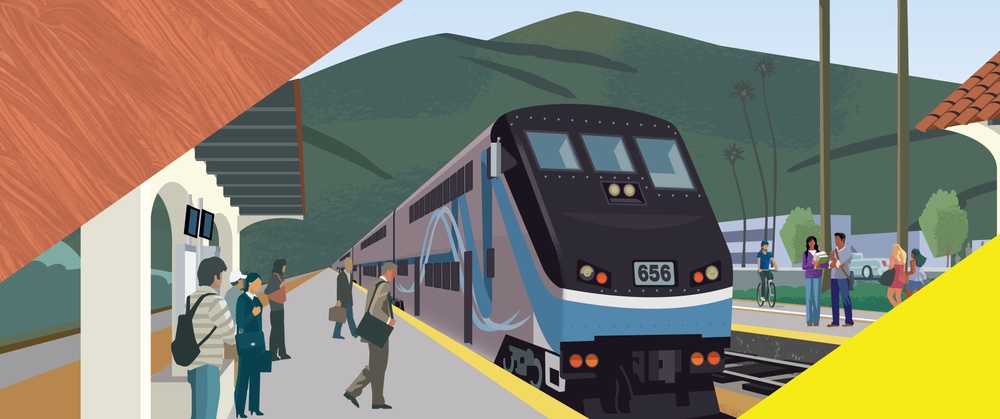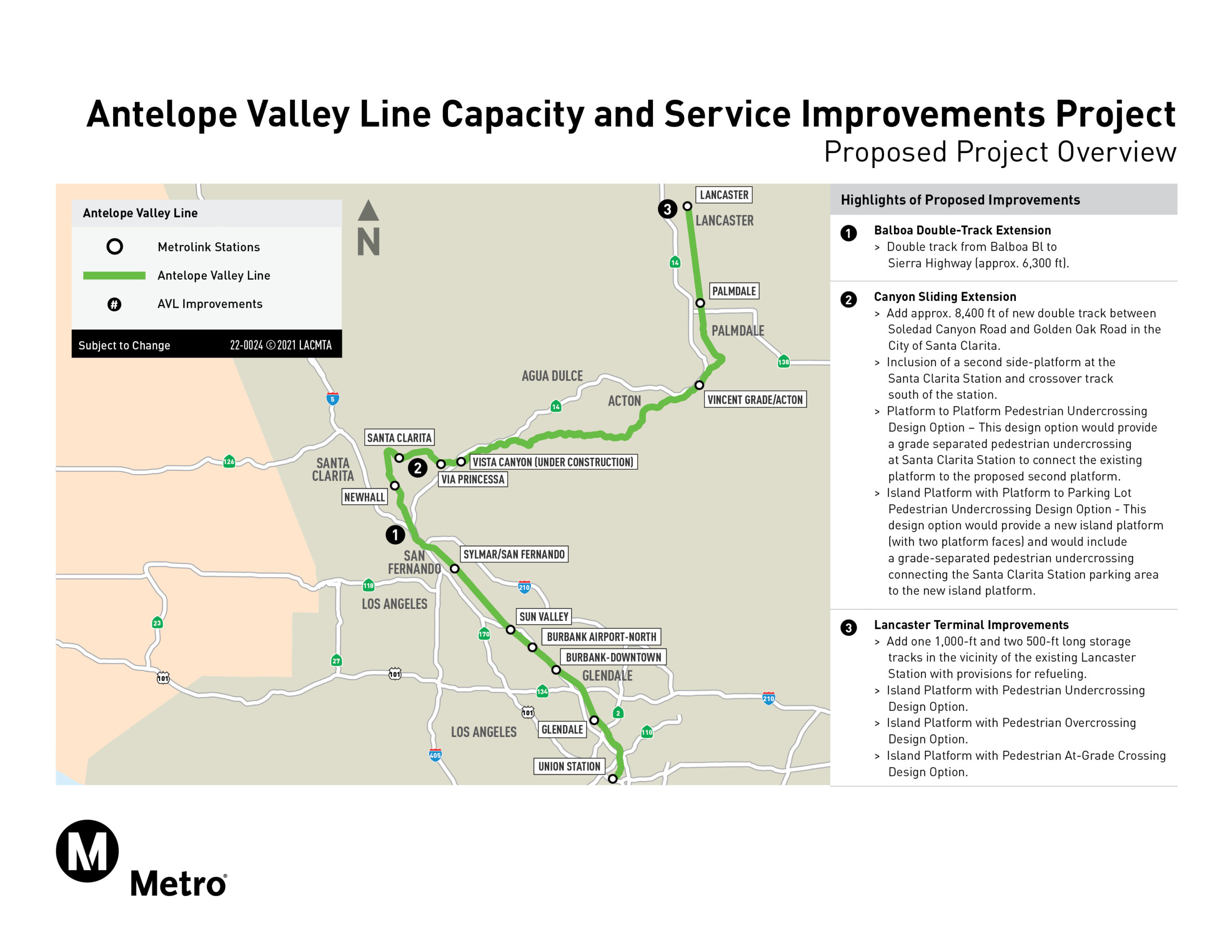Antelope Valley Line Improvements
Improving Metrolink connections between LA and the Antelope Valley.


- A double track extension near Balboa Boulevard to improve service flow and reduce bottlenecks
- A siding extension and safety enhancements near Golden Oak Road in Santa Clarita
- Terminal upgrades in Lancaster, including additional layover tracks, pedestrian improvements, and operator facilities

About this project
Understand the Program
Learn about the environmental considerations and community input that helped shape the project scope.
Frequently Asked Questions
This program supports infrastructure upgrades that allow Metrolink to improve commuter rail service between Downtown Los Angeles and Lancaster. By extending track segments, expanding storage and upgrading terminals, the project enhances reliability, operational flexibility and rider experience across the corridor. The Antelope Valley Line currently serves more than 4,300 weekday boardings—and these improvements are designed to support future growth, reduce car trips and better connect communities in the San Fernando Valley, Santa Clarita Valley and Antelope Valley.
- A double track extension near Balboa Boulevard to reduce delays and improve service reliability
- An 8,400-foot siding extension near Golden Oak Road in Santa Clarita, with improved road crossings and pedestrian safety features
- Lancaster Terminal enhancements, such as new train layover tracks, pedestrian access upgrades, operator support facilities, and safer rail crossings
The project is designed to reduce train delays and increase reliability. Construction may cause temporary disruptions near work zones, but Metro is implementing traffic and noise mitigation plans to minimize impacts.
- Canyon Siding Extension: Two station design options are under consideration. One features a second side platform with a pedestrian underpass; the other proposes an island platform with a new underpass connecting to the station parking area.
- Lancaster Terminal Improvements: Three options are under study for the new island platform—one with an underpass, one with an overpass, and one with at-grade crossings at either end.
- Balboa Double Track Extension: No alternate designs are currently proposed, but final design may include retaining structures to stay within the existing right-of-way.
The program is supported by a combination of local and state funding. In 2019, the North Los Angeles County Transportation Coalition committed up to $113.8 million in Measure M subregional funds to initiate the program. In 2020, the California State Transportation Agency (CalSTA) awarded $107.05 million through the Transit and Intercity Rail Capital Program (TIRCP). Metro is partnering with Metrolink to deliver improvements that aim to enhance rail service along the corridor.
Events
Get Involved
Help shape this project for good. We want to hear from you:

Got questions or ideas? Our project team is here to listen.
By connecting with us, you bring valuable insights to the table, helping create a Metro that truly reflects LA’s unique spirit.
